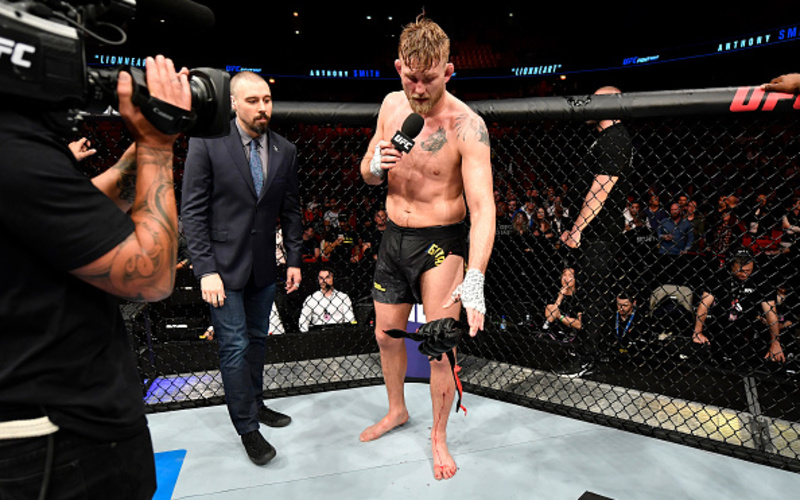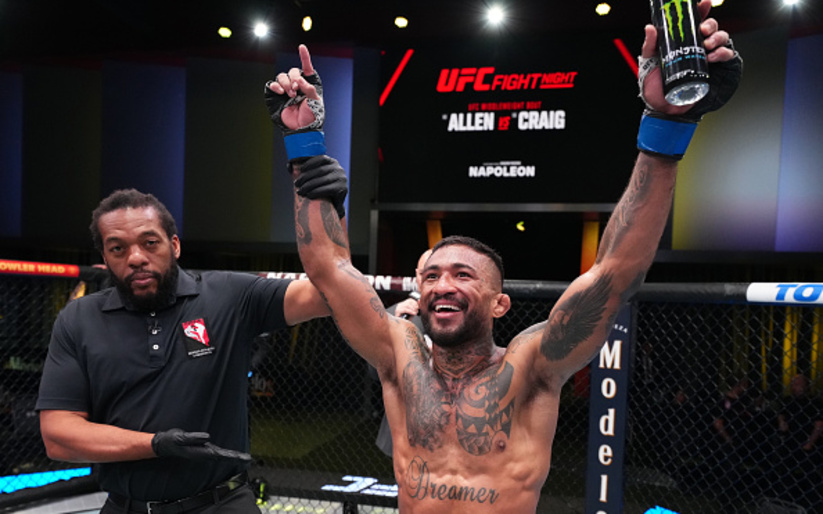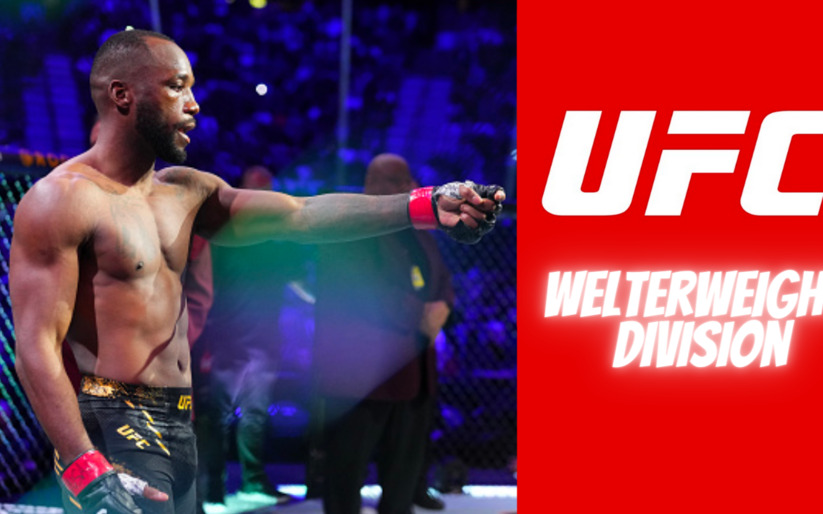Uncrowned Kings of MMA is a series where we take you through eight fighters – each one at a different weight class – who never achieved a belt in any major promotion. There are a few rules – they can still be competing but must be out of the title picture. Major promotions are the UFC, Pride, Bellator, Strikeforce, the WEC’s featherweight and bantamweight divisions, and RIZIN’s bantamweight division. Interim championships do not count unless the bearer is later promoted to undisputed champion. Today we will be looking at the light heavyweight Alexander Gustafsson – “The Mauler”.
This is part three of an eight-part series. To read the previous article, on John Dodson, click here.
Mauler
Styles make fights is one of the most common sayings in all of combat sports. Its longetivity can be attributed mainly to the fact that it is undeniably true. A fighter who previously looked unbeatable can be made suddenly mortal against an opponent with the right tools. And a fighter who looked unremarkable can reveal hidden talents against the right foe. That is the story of Alexander Gustafsson; the right man, in the right place, at the right time, to test some of the best light heavyweights ever.
Certainly, Gustafsson could not have clawed his way to prominence by chance alone. Trained in both boxing and the eclectic art of shootfighting, Gustafsson’s lateral movement and distance management stood out as strong striking elements. His jab was a constant force and his strong feinting game only made it more dangerous.
Shogun
However, Alexander Gustafsson’s potential to be a nifty technician who built off of his lead was often undermined by his opposing tendency to rush himself and try to hit with naked rear hand power shots. In addition, his hands were often held low, likely to help his movement based style. But this meant that if he closed the distance he was often very hittable and it left him open for head kicks at all ranges.
A gritty fight with an aged Maurício “Shogun” Rua showed Gustafsson at his worst. Rather than fight at the edge of his jab, as he had done against Thiago Silva, Gustafsson kept finding himself being drawn into Rua’s range. Gustafsson fought like a man with half his reach and height. Instead of creating a foundation to build off of, he often led with right hands and had to grind out a decision. With a fighter so visibly past his prime as Rua was connecting so repeatedly with overhand rights, few seemed confident that “The Mauler” would pose much threat to an opponent already cementing himself as one of the most dominant of all time.
Bones
The 205 pound division can be seen as going through three phases. The first was the reign of Wanderlei Silva, who managed to go undefeated at the weight in PRIDE for a good part of a decade. The second is the free for all in the UFC after the demise of PRIDE, with the belt swapping hands through a series of colourful contenders – Rampage, Griffin, Evans, Machida, Shogun. The third and final, that stretches to this day, is the division operating under the shadow of Jon “Bones” Jones.
Jones’s fights immediately prior to Alexander Gustafsson had largely been over fighters who had been champions themselves. Indeed, such was his talent for violence that few gave Gustafsson much of a chance. However, Jones had frequently had the advantage of either age or size. Gustafsson would immediately match Jones in both like none before had. But this was no mere question of size.
Where Gustafsson had often gotten himself in trouble with fighters on the way up by rushing forward with a rear punch (such as his bizarre fixation with a naked rear uppercut), Jones’s legendary reputation seemed to steel the Swede’s discipline. Even when Gustafsson did advance it was usually a steady marching combination. Jones seemed uncomfortable boxing in the pocket, never one of his talents, and Gustafsson found huge success with the jab and mixing up combinations to the body and head. In particular throwing jabs to the head and then the body was a strategy that often reaped rewards.
Alexander Gustafsson: Long-Range Menace
Gustafsson’s distance management was also playing havoc with Jones’s outside game. Jones had already made the various varieties of front kick to the leg his own. But all too often he found Gustafsson withdrawing, arms thrown high, in the face of this kick, rather than pushing through like Quinton “Rampage” Jackson had. Either that, or he would take it on a braced leg. Gustafsson would then circle out and return to bringing the jab to lever. When used on an opponent retreating or standing still the kick, even if it makes contact, is much reduced; traditionally the strength of the oblique kick is in damaging the knee of an advancing opponent.
Even Jones’s wrestling did little to help him. Not only did he concede an unexpected takedown to Gustafsson – though little came of it – he struggled to bring the large, powerful Gustafsson down. This would be a battle fought on the feet.
The first few rounds were certainly no blowout for the Swede. His chin would find itself tested by the ordeal. When leg kicks failed Jones went to high kicks, which often sailed past Gustafsson’s low arms and found their mark. Though Gustafsson successfully foiled many of Jones’s takedowns, he seemed to have no answer for the kicks. But as the fight went into the fourth, it was looking like “The Mauler” had the momentum.
Crisis
It seemed like Jones was headed for potential disaster and his will was being truly tested. He had been in trouble before against Vitor Belfort. But that had been a momentary instance of danger when he was caught in an armbar. Now he was potentially being outright outmatched over the rounds. With his back to the wall, Jones dug deep like he never had before. What he found was a spinning elbow in the final minute of the fourth that narrowly missed Gustafsson.
Now Jones sensed an opportunity. When Gustafsson went to the body jab again Jones timed him and cracked him with another spinning elbow. In the space of a few seconds, the situation had gone from a fight to a hunt. As the Swede reeled back the champion stalked him, dragging him into the clinch and hammering him with knees and elbows.
Jon Jones and Alexander Gustafsson – the Final Round
Gustafsson began the fifth round much the same as the others, but as the round dragged onwards it became clear he was exhausted and the champion overtook him with a vengeance. Now the composure of the final round was a race. Could Jones finish Gustafsson before the final decision? Three rounds had elapsed with close fighting; neither could be certain of the judges’s verdict. Jones opened up with his full arsenal as Gustafsson strove to keep his head above water. Jones would throw four massive high kicks in the final round and a huge flying knee in the final seconds. By the end Gustafsson was running on fumes, chin, and sheer willpower, but he ate everything Jones threw at him and went the distance.
Even as the final bell rang the fight would be hailed as one of the greatest in the history of the light heavyweight division. Ultimately Jones’s work would win on the scorecards, but the fight could have easily been scored for the challenger. Both had proved much about themselves- Gustafsson his potential and skills, Jones his chin and capacity for willpower in a crisis. But Gustafsson’s road that led back towards the belt would prove to be a rocky one.
Rumble
A short introduction to Anthony “Rumble” Johnson can go as such: he holds a legitimate claim to being the hardest hitting MMA fighter ever below heavyweight. While he would go through several incarnations at different weightclasses, by far the most dangerous was at light heavyweight. He would go on a tear, racking up five first round and one second round knockouts before he was done.
The fight with Gustafsson would not be long. After a few initial exchanges that included Gustafsson eyepoking his opponent, Rumble would catch one of the Swede’s kicks and clobbered him to the ground. Gustafsson returned to his feet but once again found himself on the wrong side of high roundhouse kicks as in the Jones fight. Finally Rumble would send him to the ground with uppercuts and finished him with brutal ground and pound.
Luckily for Alexander Gustafsson, despite his loss he himself would be given a second chance at the belt after Rumble lost his own title shot. But this time, it would not be against Bones.
DC
The majority of fighters on our list fought in divisions dominated by an all time great champion who kept them from the belt. It was Gustafsson’s extreme bad luck that he occupied the light heavyweight division during the time of not one but two such fighters.
After losing to Jones in a decision, Daniel “DC” Cormier would find himself with the belt when Jones’s indiscretions outside of the cage began catching up to him. Swiftly, the new champion began making sure there was no doubt to his legitimacy. Cormier’s success was built on three main pillars that tended to play into each other: a strong wrestling threat, exceptional handspeed, and a lethal clinch game.
The fight did not begin auspiciously for Gustafsson. As he fended off some of the champion’s kicks DC took the opportunity to close in. Almost immediately, Cormier caught him in his iconic high crotch takedown and threw him to the canvas. Gustafsson spent much of the first round on the bottom as a result, but seemed to be having more success in the second. Indeed, Gustafsson often found success with his own takedowns, catching Cormier completely off guard. It seemed he was starting to turn the fight around.
Clinch
However, Gustafsson found himself making the same mistake he had with Rua. Instead of diligently staying on the backfoot and circling off, he allowed himself to fight short. As a result, Cormier was able to catch him in his murderous clinch, dragging Gustafsson down to his level with a single collar tie before blasting him with uppercuts. Stuck in the clinch, Gustafsson’s distance management, jab and footwork were useless.
By the third whenever Gustafsson would stand to fire off punches Cormier would weave in to enter the clinch and and go for uppercuts. Gustafsson managed to reverse one of the clinches on Cormier and rocked him with knees before dropping him with punches.
When the fourth arrived it seemed Gustafsson had momentum on his side once again. He found better success in keeping out of clinches and enforcing the jab. Gustafsson also made sure to use knees and hooks to work Cormier’s exposed body. Cormier’s slow lumbering footwork meant that when Gustafsson was disciplined in staying away he was successful. However, by the fifth Gustafsson was starting to become exhausted and could not maintain that distance. Cormier began to track him down and drag him into the clinch once more.
It was a game effort for the Mauler. But once again he had fallen short. Cormier took the decision and Gustafsson returned to cobbling together another title run.
Jon Jones and Alexander Gustafsson – the Rematch
Gustafsson would get one final shot at the belt. His rematch with Jones, long delayed by Jones being stripped of the belt, taking a layoff and then returning to a rematch with DC finally came to bear. Immediately Jones showed a lack of willingness to let the fight play out how it had the first time. There was much more aggressiveness on the part of “Bones” to prevent Gustafsson from establishing the jab as effectively as he had in the first fight.
Gradually Gustafsson began uncorking the combinatons that he had been so successful with originally. But Jones had also learnt from the first fight. Rather than trying to oblique kick Gustafsson he hammered away at his legs with harder to avoid inside leg kicks.
It was clear that age had gradually taken the edge off of the speed Gustafsson had possessed in his early career. But it was likely this leg damage that finally rendered Gustafsson vulnerable to Jones’s takedown shots which he had fought off so diligently in the first fight. Once down, Jones steadily moved up and took the Swede’s back, before finishing him with savage ground and pound.
That was the end of the title ambitions of the Mauler. It was also the end of his career. After a final loss to Anthony Smith by submission, Gustafsson removed his gloves. In his own words, the show was over.
Conclusion – Alexander Gustafsson
Frustratingly, much of the story of Gustafsson’s career is unrealised potential. At his best, Gustafsson married excellent boxing technique with size, speed and good takedown defence. But all too often he found himself abandoning his true advantages and fought within his range with naked rear hands. In addition he never seemed to develop a proper method to deal with high roundhouse kicks, which took advantage of his low hands and his emphasis on lateral movement as a defensive option.
When Gustafsson was on point, he was able to push one Jon Jones to his absolute limit. But when he wasn’t he gave up rounds he could have won convincingly to a on-paper more favourable matchup in the form of Daniel Cormier. An inconsistent fighter ultimately depends on luck to be successful in a title run. For Alexander Gustafsson, luck was in short supply.
Nevertheless, this year, his legendary first fight with Jon Jones will be added to the UFC Hall of Fame, a worthy legacy of what had been. But it is bitter too, to see it there. To see that what everyone thought of at the time was the coming-of-age was ultimately the high watermark.
Featured image:
Embed from Getty Images



